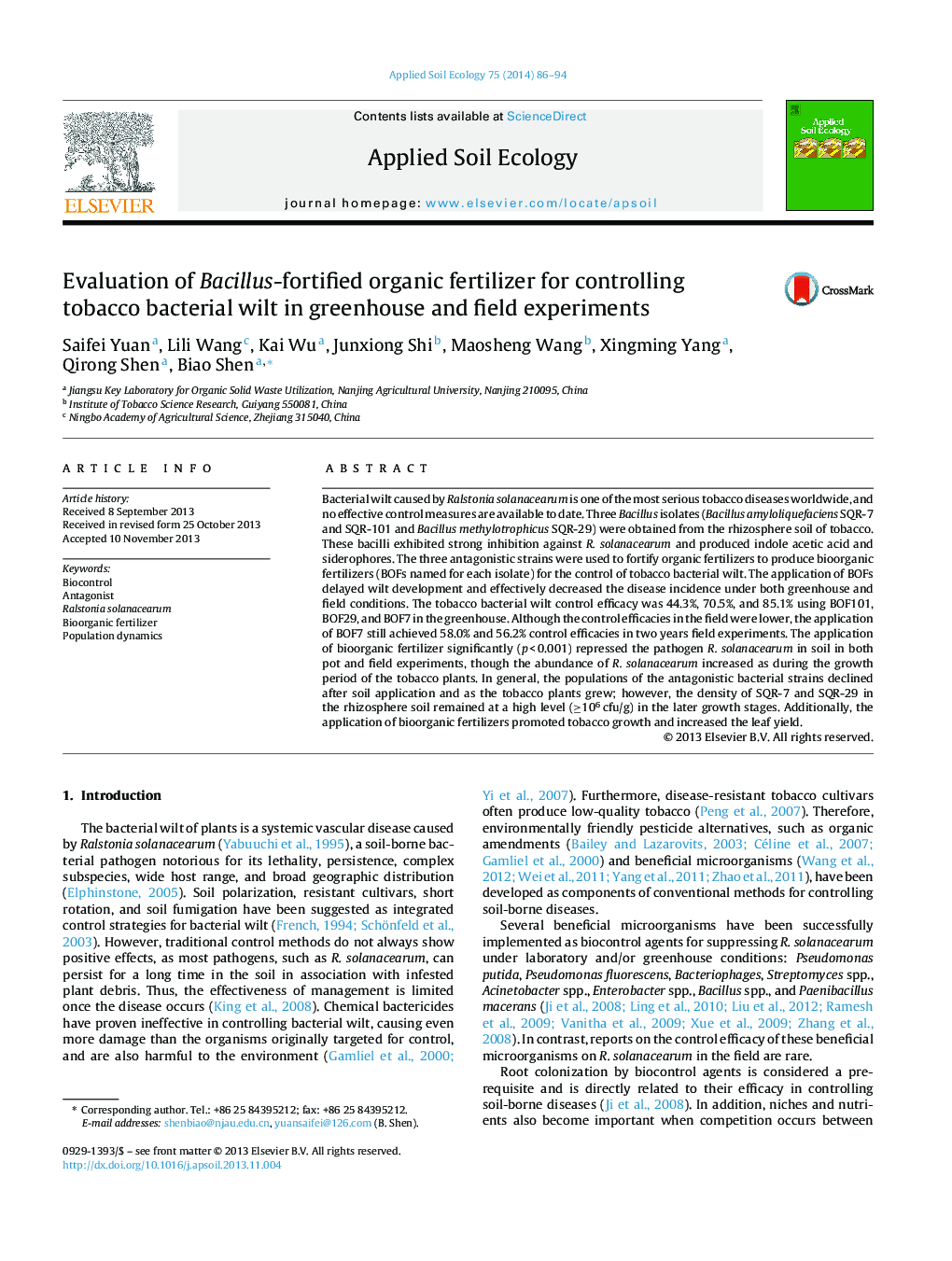| کد مقاله | کد نشریه | سال انتشار | مقاله انگلیسی | نسخه تمام متن |
|---|---|---|---|---|
| 4382283 | 1617808 | 2014 | 9 صفحه PDF | دانلود رایگان |
• The application of BOFs delayed wilt development and effectively decreased the disease incidence.
• Application of BOF7 achieved 58.0% and 56.2% control efficacies in two years field experiments.
• Application of BOFs could significantly repressed the pathogen in both pot and field experiments.
• The density of SQR-7 and SQR-29 remained at a high level in later tobacco growth stages.
• Application of BOFs promoted tobacco growth and increased the tobacco leaf yields.
Bacterial wilt caused by Ralstonia solanacearum is one of the most serious tobacco diseases worldwide, and no effective control measures are available to date. Three Bacillus isolates (Bacillus amyloliquefaciens SQR-7 and SQR-101 and Bacillus methylotrophicus SQR-29) were obtained from the rhizosphere soil of tobacco. These bacilli exhibited strong inhibition against R. solanacearum and produced indole acetic acid and siderophores. The three antagonistic strains were used to fortify organic fertilizers to produce bioorganic fertilizers (BOFs named for each isolate) for the control of tobacco bacterial wilt. The application of BOFs delayed wilt development and effectively decreased the disease incidence under both greenhouse and field conditions. The tobacco bacterial wilt control efficacy was 44.3%, 70.5%, and 85.1% using BOF101, BOF29, and BOF7 in the greenhouse. Although the control efficacies in the field were lower, the application of BOF7 still achieved 58.0% and 56.2% control efficacies in two years field experiments. The application of bioorganic fertilizer significantly (p < 0.001) repressed the pathogen R. solanacearum in soil in both pot and field experiments, though the abundance of R. solanacearum increased as during the growth period of the tobacco plants. In general, the populations of the antagonistic bacterial strains declined after soil application and as the tobacco plants grew; however, the density of SQR-7 and SQR-29 in the rhizosphere soil remained at a high level (≥106 cfu/g) in the later growth stages. Additionally, the application of bioorganic fertilizers promoted tobacco growth and increased the leaf yield.
Journal: Applied Soil Ecology - Volume 75, March 2014, Pages 86–94
